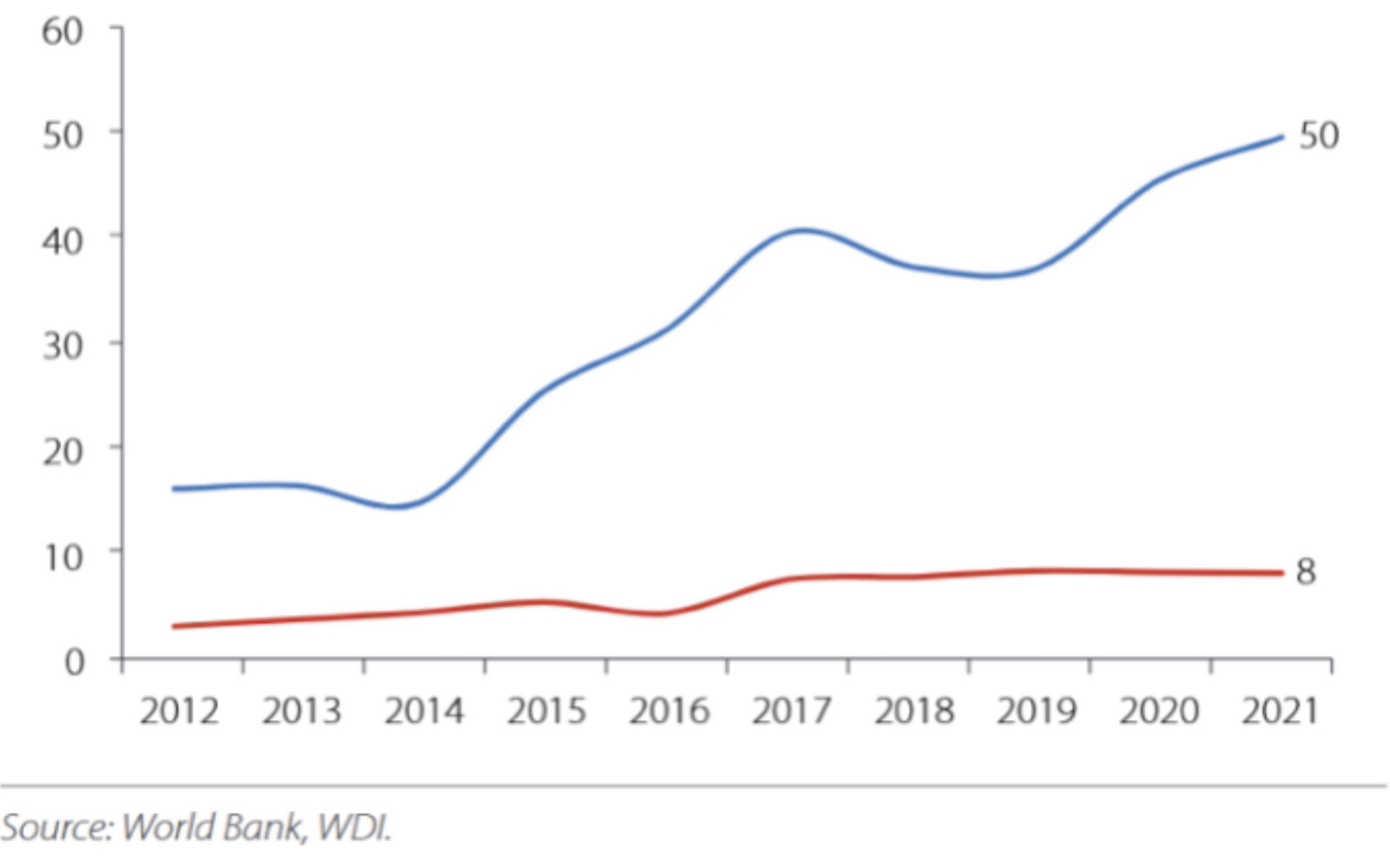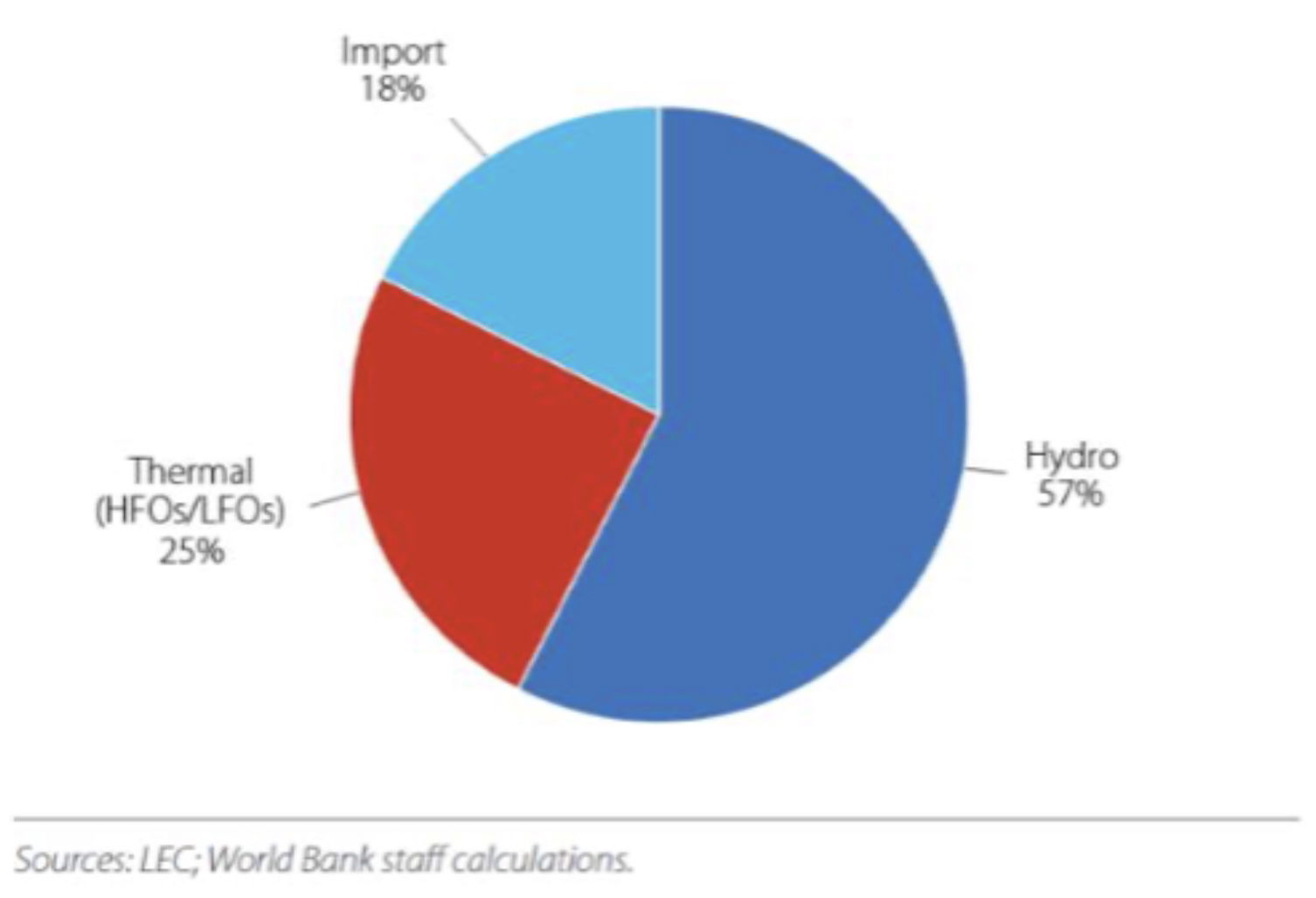Adoption of net metering in Liberia: a policy brief
 Unsplash
Unsplash Unsplash
Unsplash· 10 min read
Liberia's electricity sector relies heavily on hydropower, particularly the Mount Coffee Hydropower Plant (MCHP), which provides 88MW of renewable power during the rainy season. However, seasonal variations and infrastructure issues limit this supply, and thermal power and imports from Ivory Coast and Guinea fill the gap at higher costs.
With only 33% of the population having access to electricity in 2024, rural areas face the most challenges. Urban centers like Monrovia see higher demand, but issues like power theft and unstable supply hinder progress.
Efforts to improve electrification include hydropower rehab and a new solar farm, but growth is limited by inefficiencies, seasonal power fluctuations, and underutilised solar potential. Net metering is proposed to boost solar adoption, but high costs and regulatory barriers remain.
Access to electricity in Liberia has somehow increased over the years but with high rural-urban disparities. Overall, electricity access has reached 33% presently from under 10% in 2012. This expansion was driven by steady increases in urban electricity access (from 16% to 50%), while access in rural areas grew at a slower pace (from 3% to 8%) and has stagnated at 8% since.
Access to electricity: urban and rural as % age of the population

Grid electricity access is mainly in urban areas, with about 25% of households connected to the national grid and 7% relying on off-grid solutions like generators and solar PV, often at higher costs. Access to grid power is concentrated in urban areas (53.7%).
Type of lighting by region and % of household

Electricity demand in Liberia has risen sharply, with peak demand growing at an average of 17.6% annually from 2018 to 2023, reaching 90 MW. This increase is driven by grid expansion and urbanisation. After the Civil War, the national grid relied on costly heavy fuel oil plants with a capacity of 38 MW. By 2017, capacity grew to 126 MW with the addition of 88 MW from the Mount Coffee Hydropower Plant.
Despite increased generation capacity, Liberia faces a significant power deficit, especially in the dry season. In 2023, peak demand of 90MW was met with only 47MW from hydropower and thermal plants, as hydropower, which makes up 70% of the mix, depends on rainfall. When there is lower than average rainfall, particularly during the dry season from January to May, MCHPP generation capacity can fall by 75% or more, with only one out of four units available to run at reduced load.
To compensate for supply shortages during the dry season, Liberia began to import power in 2023 through a power purchasing agreement with Cote d’Ivoire, one of the West Africa Power Pool countries, to purchase 27MW to help fill the demand-supply gap, particularly during the dry season. With the imported electricity, the volume of energy supply nearly doubled in 2023 to 447.2 GWh, compared to 271.9 GWh in 2022. As a result, in 2023, hydropower accounted for 57% of Liberia’s electricity supply capacity, thermal plants 25 %, while 18% was imported.
Liberia sources of power, 2023

However, even with these imports, supply could barely meet the country’s peak demand of about 90 MW. In April 2024, power imports increased to 50 MW during off-peak hours (i.e., from 6am to 6pm) and 25MW during the peak period (i.e., from 6pm. to 6am). Nevertheless, electricity shortages have persisted, resulting in protracted load shedding and unplanned blackouts.
Unreliable electricity hampers growth and business in Liberia, limiting productivity, investments, and local employment, particularly in energy-intensive sectors like manufacturing. A stable supply would reduce costs, improve profit margins, and boost living standards.
Despite several tariff reductions, Liberia still has one of the highest electricity rates in West Africa. From US$0.52 per kWh in 2017, the rate dropped to US$0.24 for residential users in 2022, but with an average of US$0.20 per kWh, it remains higher than most West African countries.
Imported power can fill supply gaps, but investing in renewable energy, like solar PV, offers a sustainable solution. Shifting from fossil fuels to renewables will improve energy access, the business environment, and support growth and development in Liberia.
Due to the seasonality of hydropower resources, complementing hydropower projects with solar PV development will enable a balance of power supply yearly. The climatic conditions of Liberia are favorable for harnessing solar resources for power generation. The country has a high and consistent average level of 1,712 kWh/m2/year of solar radiation and the potential for generation of 1,400 to 1,500 kWh/kWp.
Net metering allows solar system owners to earn credits for electricity they add to the grid. For example, a home with a PV system may generate excess power during the day, which is credited for future use when demand exceeds production. Customers are billed only for their "net" energy use. Typically, 20-40% of solar output is exported to the grid, serving nearby customers.
Several countries have successfully implemented net-metering programs, providing valuable lessons for Liberia. For instance, the United States and Germany have seen significant growth in renewable energy adoption due to favourable net-metering policies.
India: India's net metering policies promote rooftop solar installations, allowing consumers to offset electricity bills and boost solar generation. States like Gujarat and Tamil Nadu have successfully used net metering to reduce electricity shortages and grid reliance.
Philippines: The Philippines introduced net metering in 2013, allowing households and businesses to install solar photovoltaic systems. This policy has supported renewable energy growth while addressing the country's energy challenges, including high electricity costs and power shortages.
Kenya: Kenya's 2024 Net-Metering Regulations allow individuals and businesses to generate solar power and feed surplus back to the grid, with caps on domestic (4-10 kW) and commercial (1 MW) systems. Participants earn credits to offset energy costs, though challenges like capacity limits and low credit rates remain.
Designing a Net Metering system is complex, requiring clear guidelines, tariffs, and technical regulations, so the following recommendations, based on successful global examples and expert advice from GIZ, are made to guide Liberia's implementation.
Start with Surveys and Feasibility assessment. In-depth studies should be carried out to ascertain the customer base, the ability of customers and the grid to accommodate Net Metering technology. Findings from this study can then be followed by a pilot phase that gives concrete evidence upon which to base the regulation.
• Establishing Regulations and Guidelines to regulate the process. GIZ, which has accompanied the implementation of net metering in several countries, recommends deployment in two phases: Net metering should first target middle-income households and commercial users, then expand to low-income households and rural areas.
• Be detailed and exact. The Liberia Electricity Regulatory Commission (LERC) should ensure the Net Metering regulatory framework is clear and precise: at least detail the conditions of eligibility, the connection procedure, the responsibilities of each (who owns the meter, who verifies it), and the technical specifications (size of the system).
• Simplification of administrative procedures as much as possible so that they can be understood by all with no ambiguity. Prospective consumers may be discouraged by the costs of the procedures they have to go through.
• Strengthen the skills of the Liberia Electricity Company (LEC): A new billing system must be set up to manage impact studies, disputes, and optimise compensation, ensuring the injected kWh value is equal to or lower than the average production cost, with energy limits set by regulations; customers should cover the two-way meter cost
• Provide compensation for only the energy injected into the grid: If there is a problem on the network that prevents the energy from being injected, the customer can receive technical assistance but must not be compensated
• The Regulator (LERC) should work to Prevent customers from becoming IPPs: Injectable power must not exceed the limit in the sales contract, ensuring the customer remains a net importer from the utility. Case studies show limits typically allow only 30-40% of rooftop-generated electricity to be injected into the grid
• Ensure grid and network security:Technical safeguards should ensure power injection doesn’t affect grid stability, with some countries, like India, setting limits on power at transformer stations
• Strict implementation of regulations to ensure technical and financial compliance: In many countries (such as Ghana or Cabo Verde), the issue consists in the regulation’s implementation rather than in regulations formulation. There should be a strong political will to translate the laws into action
Generally, the feedback from other countries should be used to optimise the regulatory framework and help from international experts such as the German International Cooperation (GIZ) which has provided technical assistance in several developing and emerging countries.
Financial incentives: The government should subsidise meter costs and offer tax breaks on solar PV imports to reduce installation expenses
Public awareness campaigns: LEC and LERC should launch campaigns to educate middle-income households and businesses on solar energy and net metering benefits
Capacity building: Train technicians and grid operators to implement, maintain, and repair net-metering systems and PV components
Monitoring and evaluation: Develop metrics to track the policy's effectiveness, including solar installations, energy savings, and cost savings
Net metering has a lot of documented benefits for the customers, Electricity suppliers, the government, the environment and broadly speaking the economy.
The implementation cost for a net metering policy varies based on the scale of the initiative, the technical compatibility of the power grid, and the cost of solar PVs.
Key cost components:
Cost for Liberia: In the case of Liberia, an assessment will have to be carried out to study the compatibility of the infrastructure with all components of the Net metering system to arrive at a definite cost for the implementation that is tailored and suited for the grid, and demography. The government does not have to bear all the cost of this feasibility or initial implementation costs. It can mobilize resources from the World Bank, AfDB, GIZ, and other bilateral partners to fund the project.
Liberia's net metering policy can reduce reliance on seasonal hydropower and costly imports by promoting solar PV, enhancing energy security, sustainability, and economic growth. Success depends on clear regulations, public awareness, technical capacity, and financial incentives to overcome barriers like high costs and infrastructure limitations.
illuminem Voices is a democratic space presenting the thoughts and opinions of leading Sustainability & Energy writers, their opinions do not necessarily represent those of illuminem.
illuminem briefings

Hydrogen · Energy
illuminem briefings

Energy Transition · Energy Management & Efficiency
Vincent Ruinet

Power Grid · Power & Utilities
World Economic Forum

Renewables · Energy
Financial Times

Energy Sources · Energy Management & Efficiency
Hydrogen Council

Hydrogen · Corporate Governance